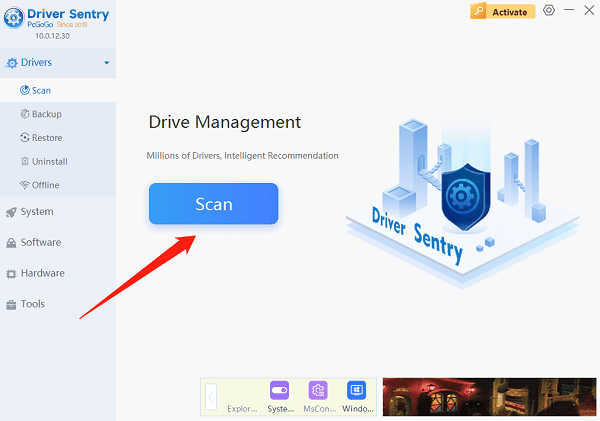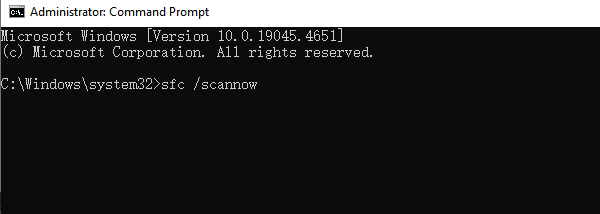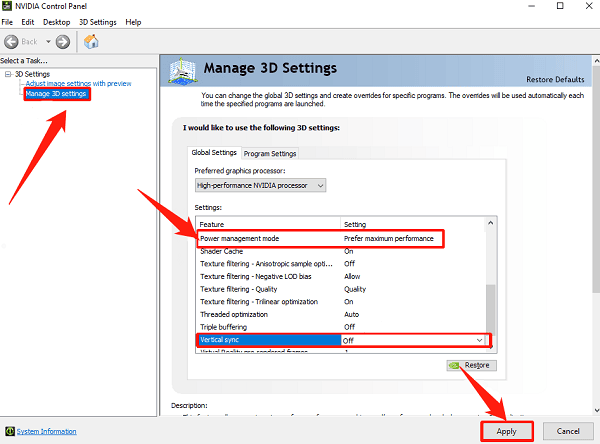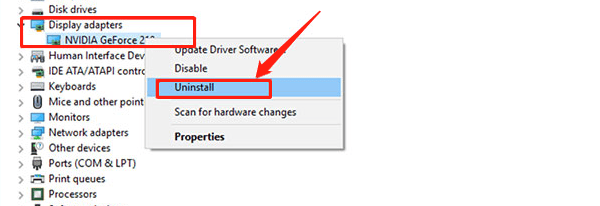
During regular use, some users may encounter issues such as NVIDIA driver crashes, unresponsive display drivers, or black screen flickering, which can severely impact gaming performance and graphic processing tasks. This article offers several practical solutions to help you efficiently fix NVIDIA driver crashes on Windows systems.
1. Common Symptoms of NVIDIA Driver Crashes
Sudden system black screen or reboot
"Display driver stopped responding and has recovered" message
Crashes during game or graphic software execution
Screen flickering or graphical glitches
Frequent crashes of "NVIDIA Container" in Task Manager
2. Solutions for NVIDIA Driver Crashes
Solution 1: Update the NVIDIA Graphics Driver
Outdated, corrupted, or incompatible drivers are one of the main reasons for continuous GPU crashes. Ensuring your driver is up to date can effectively solve this problem. It's recommend to use Driver Sentry to automatically detect and update drivers, saving time and preventing risks of downloading the wrong driver.
Click the download button to get the latest version of Driver Sentry. After installation, launch the software and click "Scan".

Once the scan is complete, it will show which drivers are missing or outdated. Locate the NVIDIA graphics driver in the list and click the "Upgrade" button.
After the update is finished, it's recommended to restart your computer to ensure the new driver takes effect properly.
Solution 2: Repair System Files
Press Win + S, search for "CMD", right-click Command Prompt, and select "Run as administrator".
In the command prompt, type the following and press Enter: sfc /scannow

This command will scan and repair any corrupted system files. The process may take a few minutes.
Solution 3: Adjust NVIDIA Control Panel Settings
Right-click on the desktop and choose "NVIDIA Control Panel".
Under "Manage 3D Settings", set the "power management mode" to "Prefer maximum performance" and turn off "Vertical Sync". Click "Apply".

Make sure your display adapter is configured correctly and not conflicting with other GPU drivers.
After making changes, restart your computer and try installing or running the NVIDIA driver again.
Solution 4: Uninstall and Reinstall the NVIDIA Driver
Press Windows + X and select "Device Manager".
Expand the "Display adapters" section, right-click your NVIDIA GPU, and select "Uninstall".

In the confirmation dialog, check "Delete the driver software for this device", then click "OK".
Once uninstalled, go to the NVIDIA official website and download the latest driver.
Install the driver and restart your computer.
Solution 5: Check for Hardware Issues
Use Driver Sentry to check hardware temperatures by going to the Hardware tab to view CPU, GPU, and disk temperatures.
Ensure GPU fans are working properly and clean any dust buildup inside your PC case.
Make sure the graphics card is securely seated in the PCI-E slot; reseating the GPU may help resolve crash issues.
3. Pro Tips to Prevent NVIDIA Driver Crashes
Before updating the driver, uninstall the old version first to ensure a clean and stable installation.
Keep your system clean and check cooling performance regularly.
Close unnecessary background programs before launching games to free up GPU resources.
If crashes happen frequently, use Event Viewer to record error codes and search for targeted solutions.
NVIDIA driver crashes are common, but with proper troubleshooting and timely driver updates, most issues can be resolved. We recommend regularly using Driver Sentry to check and update your device drivers while ensuring system compatibility and hardware stability for a smoother graphics experience.
See also:
Solutions for Steam Missing File Privileges
How to Fix Monster Hunter Wilds Crashing on Windows 10